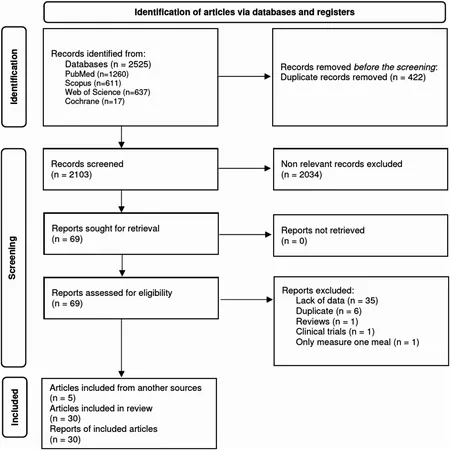
Uncovering the Secrets of Family Diet: How Twins, Siblings, and Spouses Influence Eating Habits!
2024-11-29
Author: Arjun
Introduction
In a groundbreaking meta-analysis, researchers have delved deep into the complex web of genetic and environmental factors that shape our dietary habits. This extensive study focused on the dietary intake patterns among singletons, twins, and spouses, revealing surprising insights into familial resemblance in food choices and nutritional intake.
Background of the Study
The study sought to understand how familial ties govern dietary intake, drawing from various research studies published up until September 2024. Variations in energy, nutrient, and food group consumption were analyzed, focusing on twin and family-based observations. The researchers harnessed a wealth of data from online databases such as PubMed, Scopus, and more to ensure a comprehensive insight.
Methodology
Researchers meticulously categorized 30 observational studies into six groups—non-twin siblings, monozygotic (MZ) twins, dizygotic (DZ) twins, all twins, all siblings, and spouses. They employed statistical methodologies to calculate a pooled correlation coefficient (r), providing a clear picture of dietary similarities.
Key Findings
The results were fascinating! The dietary habits of siblings, especially MZ twins, showed significant similarities. For instance, high correlations were noted in their intake of vegetables (r: 0.59), red meat (r: 0.58), and fruits (r: 0.56). Interestingly, DZ twins showed lower correlation rates for items like eggs (r: 0.07) and soft drinks (r: 0.14), demonstrating that genetic alignment influences dietary choices significantly.
Among spouses, there was also a notable degree of dietary resemblance, with correlational data pointing to shared consumptions of polyunsaturated fats (r: 0.41) and saturated fats (r: 0.40). It's compelling to see how life partners influence each other's eating habits in this capacity!
Conclusion of the Study
What does this all boil down to? It highlights that dietary choices are profoundly molded by both genetics and the shared environments of family members. MZ twins exhibit the strongest resemblance in eating patterns, whereas non-twin siblings and DZ twins show less significant similarities, leading to the understanding that environmental influences could potentially shift dietary habits over time.
Implications for Future Research
Given the revealed complexities, further investigation is needed to dissect the intricate balance of genetic predisposition and environmental factors influencing food intake. What's particularly intriguing is how external factors—including social dynamics and modern lifestyles—affect these relationships.
Broader Context
As we observe shifts in dietary patterns globally—from the rising consumption of fast food to diverse eating experiences both at home and away—the importance of familial influences on dietary choices becomes increasingly pertinent. Are couples eating more healthily together than they did individually? Are children being shaped by the eating habits of their school environments? These questions invite further exploration to truly understand how family dynamics shape our plates.
Final Thoughts
Ultimately, understanding familial dietary patterns not only offers insights into health trajectories but also opens doors for interventions aimed at improving nutritional intake among families. With lifestyle challenges evolving, prioritizing healthy eating through familial bonds remains critical.
Stay tuned as we keep you updated with the latest revelations in the world of diet and health! Don't miss out on the chance to transform your eating habits by recognizing the powerful influence of your family!



 Brasil (PT)
Brasil (PT)
 Canada (EN)
Canada (EN)
 Chile (ES)
Chile (ES)
 España (ES)
España (ES)
 France (FR)
France (FR)
 Hong Kong (EN)
Hong Kong (EN)
 Italia (IT)
Italia (IT)
 日本 (JA)
日本 (JA)
 Magyarország (HU)
Magyarország (HU)
 Norge (NO)
Norge (NO)
 Polska (PL)
Polska (PL)
 Schweiz (DE)
Schweiz (DE)
 Singapore (EN)
Singapore (EN)
 Sverige (SV)
Sverige (SV)
 Suomi (FI)
Suomi (FI)
 Türkiye (TR)
Türkiye (TR)